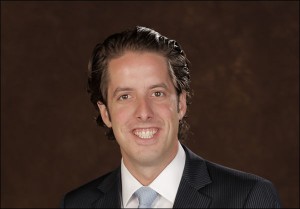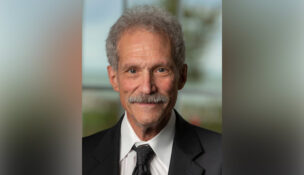ON THE DEFENSIVE: Netflix documentary shows making of a good defense attorney
By: Anthony Cotton//January 5, 2016//
ON THE DEFENSIVE: Netflix documentary shows making of a good defense attorney
By: Anthony Cotton//January 5, 2016//

The Netflix series “Making a Murderer” has garnered national attention. The episodes are compelling, largely because Steven Avery was wrongly convicted of rape, having served 18 years in prison for that crime.
In 2003, DNA evidence proved his innocence, and Avery’s legal team sued many of the law-enforcement officers involved in that original prosecution. The defendants in that lawsuit faced substantial personal liability because there was compelling evidence that they had conspired to conceal evidence of Avery’s innocence.
Roughly two years after his release from prison, Avery was charged with the murder of Teresa Halbach, a photographer who had come to the Avery compound to photograph one of his vehicles. The title, “Making a Murderer,” suggests that Avery’s wrongful conviction and prison sentence transformed him into someone who could commit homicide. Alternatively, the film posits the hypothesis that the case against Avery was questionable, and law enforcement either manipulated or planted evidence to ensure there would be a conviction.
Dean Strang and Jerry Buting are featured heavily in the film. Buting and Strang are defense attorneys, well known to anyone who practices in Wisconsin. The film features them in court, but also walking around the Avery scrapyard, interviewing family members, strategizing about incriminating pieces of evidence, and agonizing over the prosecution’s tactics.
Strang and Buting embody the essence of what it means to be a defense attorney. They are tireless and passionate in their defense of their client, even in the face of overwhelming evidence. They identify the key points of doubt in Avery’s case, and they find ways to explain that evidence clearly to the jury. Buting and Strang evince the compassion many defense attorneys feel toward their clients. Both of them continue to visit Avery in prison, for free, even after his conviction. Click here to subscribe to Wisconsin Law Journal today
While “Making a Murderer” reveals the best side of criminal defense, it also captures the woefully inadequate representation given to Avery’s co-defendant, Brandon Dassey.
Unlike his uncle, Dassey had no money and therefore could not assemble a defense team of his choosing. Instead, he was given appointed counsel, Len Kachinsky, who started talking to the media before even meeting his client.
Inexplicably, Kachinsky remarked that his client was guilty before sitting down and hearing Dassey’s side of the story. Perhaps most sickening, Dassey’s lawyer sent his investigator to meet his client in order to get Dassey to give stronger evidence against Avery.
Kachinsky then contacted detectives and let them interview his client without counsel.
Dassey’s conviction is a travesty of justice and should be vacated. Dassey is clearly low functioning, and he failed to receive meaningful representation when it mattered most. Unfortunately, Dassey’s appeals have fallen on deaf ears because our system values finality of conviction over all else.
Legal News
- Chicago man sentenced to prison after being caught with ‘Trump Gun’
- FTC bans non-competes
- Gov. Evers seeks applicants for Dane County Circuit Court
- Milwaukee man charged in dismemberment death pleads not guilty
- Democratic-led states lead ban on the book ban
- UW Madison Professor: America’s child care crisis is holding back moms without college degrees
- History made in Trump New York trial opening statements
- Prosecutor won’t bring charges against Wisconsin lawmaker over fundraising scheme
- Republican Wisconsin Senate candidate says he doesn’t oppose elderly people voting
- Vice President Harris to reveal final rules mandating minimum standards for nursing home staffing
- Election workers fear threats to their safety as November nears
- Former law enforcement praise state’s response brief in Steven Avery case
WLJ People
- Power 30 Personal Injury Attorneys – Russell Nicolet
- Power 30 Personal Injury Attorneys – Benjamin Nicolet
- Power 30 Personal Injury Attorneys – Dustin T. Woehl
- Power 30 Personal Injury Attorneys – Katherine Metzger
- Power 30 Personal Injury Attorneys – Joseph Ryan
- Power 30 Personal Injury Attorneys – James M. Ryan
- Power 30 Personal Injury Attorneys – Dana Wachs
- Power 30 Personal Injury Attorneys – Mark L. Thomsen
- Power 30 Personal Injury Attorneys – Matthew Lein
- Power 30 Personal Injury Attorneys – Jeffrey A. Pitman
- Power 30 Personal Injury Attorneys – William Pemberton
- Power 30 Personal Injury Attorneys – Howard S. Sicula











